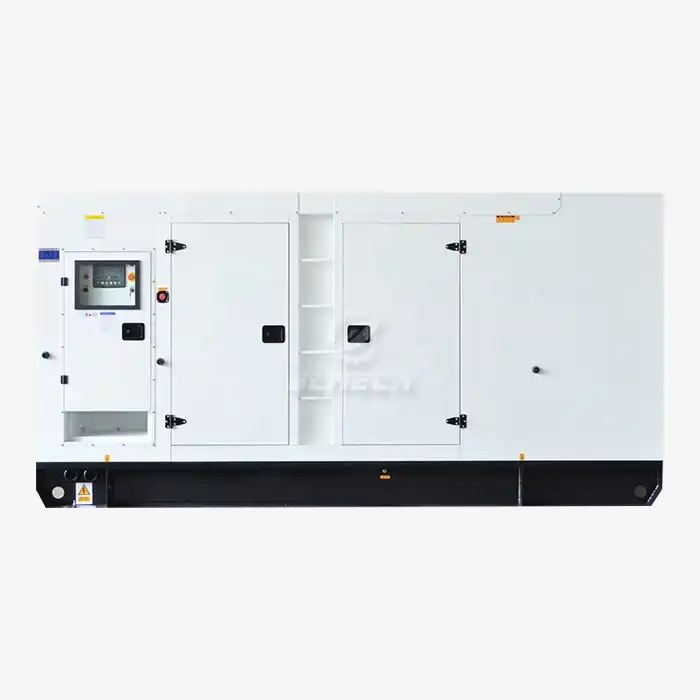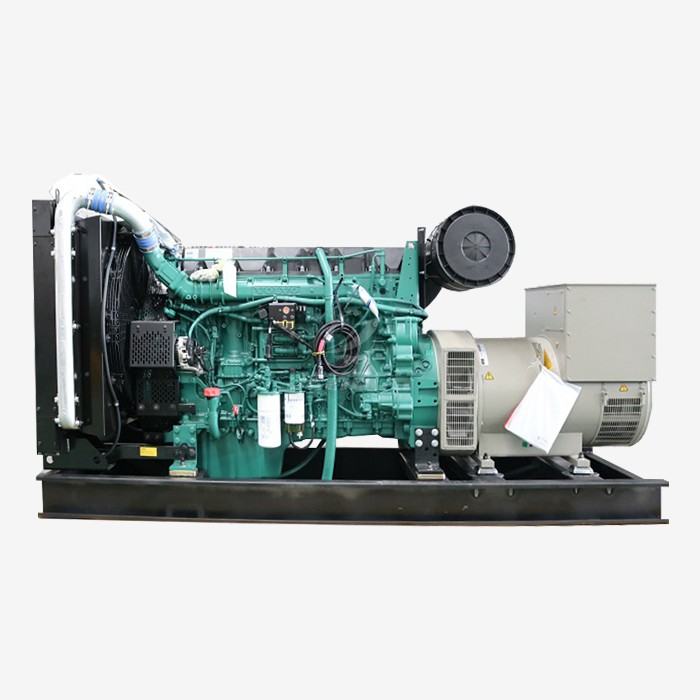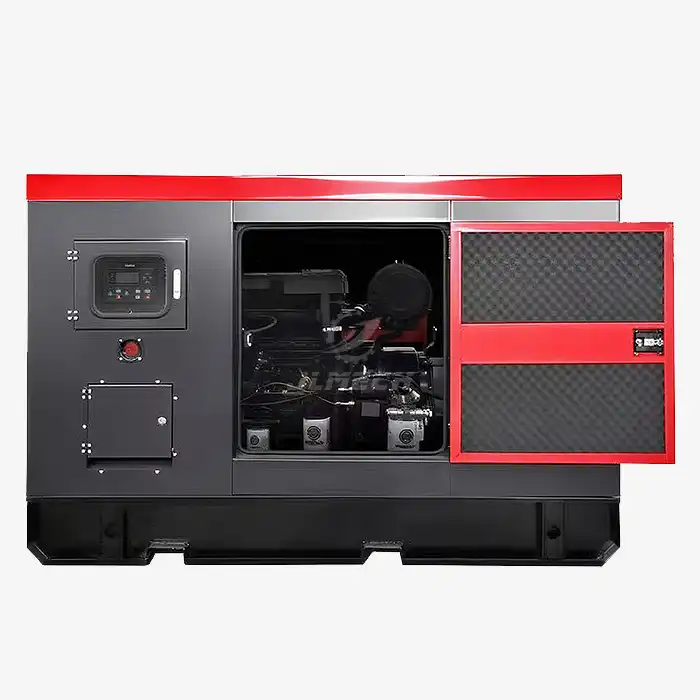Diesel Oil Line: Material Selection for Longevity
For any diesel generator system, longevity and reliability are paramount. While much attention is given to the engine and alternator, the durability of your Diesel oil line is equally critical. This component serves as the lifeline of your power generation system, and its failure can lead to costly downtime, environmental hazards, and significant repair expenses. Selecting the correct material for your Diesel oil line isn't just a technical specification—it's a fundamental business decision that impacts your total cost of ownership and operational reliability. A properly chosen line ensures efficient fuel delivery, resists degradation, and aligns with the long-term performance you expect from your diesel generator.

Material Compatibility with Diesel
Diesel fuel, especially modern ultra-low sulfur diesel (ULSD) and biodiesel blends, has specific chemical properties that can degrade incompatible materials over time. The inner layer of the Diesel oil line must resist swelling, cracking, and embrittlement caused by constant exposure to diesel and its additives.
NBR (Nitrile Butadiene Rubber): This is a prevalent and generally reliable choice for diesel applications. It offers a strong balance of resistance to diesel's chemical composition, flexibility, and cost-effectiveness. Hoses constructed with NBR inner tubes are commonly used and can meet industry specifications like those for diesel fuel hose applications .
Specialized Composites: For enhanced performance, particularly against modern bio-blends and for lower permeability, specialized composites are available. These materials are engineered to minimize fuel seepage through the hose walls (permeation) and maintain integrity against a wider range of diesel additives .
The goal is to select a material where the inner tube will not break down, contaminate the fuel, or lose its structural integrity, ensuring a consistent and clean fuel supply to the engine.
Pressure and Temperature Requirements
A Diesel oil line must maintain its integrity under the operational pressures and temperatures of your specific generator system. Underestimating these factors is a common cause of premature line failure.
Pressure Rating: Diesel systems, particularly those with high-pressure pumps, can subject fuel lines to significant stress. Ensure the working pressure rating of the hose exceeds the maximum system pressure, and consider the burst pressure rating for a critical safety margin. While some standard hoses are rated for pressures like 232 psi (1.6 MPa) , advanced solutions are designed to withstand much higher demands, with some developed for supply pressures up to 75 bar and burst pressures over 200 bar .
Temperature Range: Generator environments can experience wide temperature swings. The hose must remain flexible at low start-up temperatures and must not soften, degrade, or excessively expand at high under-hood or ambient temperatures. Look for materials that perform reliably across a broad range, such as -30°C to +100°C or better .
Matching the hose's pressure and temperature specifications to your generator's operating profile is non-negotiable for preventing leaks and ruptures.
Environmental and Mechanical Stress
Beyond fuel and pressure, the physical environment where the Diesel oil line is installed subjects it to multiple forms of mechanical stress that can shorten its life.
Abrasion Resistance: An abrasion-resistant outer cover is essential to protect the hose from wear caused by rubbing against other components, brackets, or the chassis .
Ozone and Weather Resistance: Exposure to ozone, sunlight, and various weather conditions can cause cracking in the outer cover of low-quality hoses. A robust cover material is vital for long-term outdoor durability .
Vibration and Flexing: Generators create significant vibration. The fuel line must be able to absorb and dampen these vibrations without fatiguing. Its construction should allow for necessary flexing during installation and operation, preventing failure at connection points .
A hose that is not built to withstand these environmental and mechanical challenges will likely fail prematurely, even if it is chemically compatible with diesel.
Structural Reinforcement
The internal construction of the hose is what gives it the strength to handle pressure and resist kinking. The reinforcement layer is the backbone of a durable Diesel oil line.
Textile or Fiber Reinforcement: Most standard fuel hoses use one or more layers of braided textile or synthetic fiber (like polyester). This reinforcement provides pressure stability and kink resistance while maintaining flexibility .
Wire Braid Reinforcement: For higher-pressure applications, a spiral or braided wire reinforcement is often used. This offers superior strength and pulse pressure resistance, which is crucial for lines connected to high-pressure fuel pumps .
The type of reinforcement directly determines the hose's pressure rating and long-term dimensional stability under load.
Industry Standards and Certifications
Relying on manufacturer claims alone is risky. Industry standards and certifications provide an unbiased verification of a hose's performance and safety capabilities.
SAE Standards: Standards like SAE J30R7 define requirements for low-permeation fuel hose, which is increasingly important for emissions control and fuel efficiency .
ISO Standards: Standards such as ISO 19013-1 specify requirements for rubber and plastic hoses for use in diesel fuel circuits .
Other Certifications: Look for certifications that may be required for your industry or region, including耐火 (fire resistance) ratings, which some specialized hoses are tested for .
Using a hose that complies with recognized standards is your best assurance that it has been tested to perform as advertised.
Connections and Installation
Even the best hose will fail if improperly connected or installed. The integration of the hose into the system is as critical as the hose itself.
Secure Connections: Ensure hose ends are compatible with the fitting type (e.g., barbed, swage, or quick-connect). The connection must be secure and leak-free, capable of withstanding system pressure and vibration .
Proper Routing and Clamping: Route the hose to avoid sharp bends, excessive tension, or contact with hot or sharp surfaces. Use appropriate clamps and mounting brackets to support the hose and prevent abrasion or stress at the connections.
A flawless installation maximizes the service life of the fuel line and prevents the vast majority of leak-related failures.
Maintenance and Lifespan Expectancy
Proactive maintenance and understanding the expected service life of your components are key to preventing unexpected failures.
Regular Inspection: Implement a schedule to visually inspect the Diesel oil line for signs of wear, cracking, softening, abrasion, oil seepage, or damage to the end fittings.
Preventive Replacement: Even with no visible issues, consider preventive replacement of critical fuel lines based on the manufacturer's recommended service life or observed industry practices. Some high-quality hoses are designed for a service life aligned with the vehicle or equipment's lifespan .
Adhering to a disciplined maintenance protocol ensures that potential issues with the diesel oil line are identified and rectified before they lead to a system failure.
Conclusion
The material selection for your Diesel oil line is a critical engineering choice with direct consequences for the reliability, safety, and total cost of ownership of your diesel generator. It requires a holistic consideration of chemical compatibility, pressure and temperature ratings, mechanical durability, and adherence to industry standards. By investing in a correctly specified and high-quality diesel oil line, you are not just buying a component; you are investing in the uninterrupted performance of your entire power system.
Our team of engineering specialists is ready to help you select the optimal fuel system components for your specific generator models and operational requirements. For professional guidance and reliable solutions, please contact our experts at skala@whjlmech.com.
References
Hebei Kemo Auto Parts Technology Co., Ltd. (2025). *Automotive Fuel Line - E85-Safe, Diesel-Ready, OEM Grade* .
ContiTech AG. (2011). ContiTech Supplies Extremely Elastic Fuel Lines .
Huizhou Jingweitong Rubber Products Co., Ltd. (2020). 2.0MPA Automotive Oil Pipe, Oil Resistant Pipe Manufacturer, Diesel Gasoline Pipe Wholesale .
International Organization for Standardization. (2005). *ISO 19013-1:2005 Rubber and plastics hoses — Methods of test for textile-reinforced types — Part 1: Resistance to hydrocarbons and oxidative stress* .
Society of Automotive Engineers. SAE J30R7: Fuel and Oil Hoses
 VIEW MOREHotel backup diesel generator
VIEW MOREHotel backup diesel generator VIEW MORECold start diesel unit
VIEW MORECold start diesel unit VIEW MOREThree phase four wire diesel generator
VIEW MOREThree phase four wire diesel generator VIEW MOREConstruction application diesel generator
VIEW MOREConstruction application diesel generator VIEW MORE300kVA Silent Diesel Generator
VIEW MORE300kVA Silent Diesel Generator VIEW MOREHigh efficiency generator
VIEW MOREHigh efficiency generator VIEW MOREparts of diesel generator
VIEW MOREparts of diesel generator VIEW MOREdiesel generator 230v
VIEW MOREdiesel generator 230v



